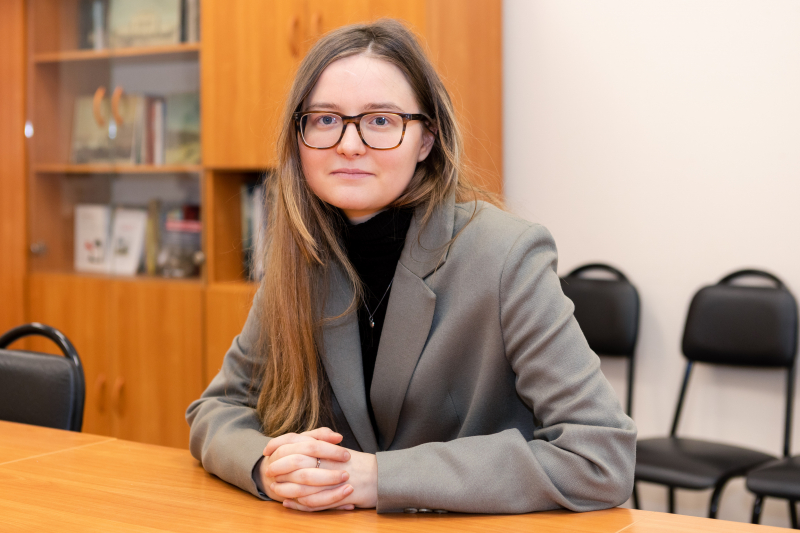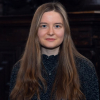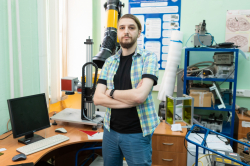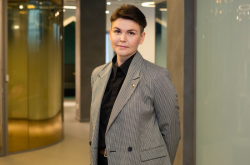How did you become interested in art history?
I’ve always loved museums. My grandparents and parents often took me to different museums. Back then, I was drawn to the feeling of everything being in its place that I got there. As I grew older and began to go to museums alone, I started enjoying the fact that one exhibit can have so many different messages. It’s a bit like a riddle: you look at a painting and learn who created it, when it was painted, and what it is about. What’s more, each art curator communicates their own ideas. That is what’s so great about visiting different exhibitions.
Thanks to my school teacher, I learned to analyze artwork and even won the national art history contest for school students twice. Basically, that’s what brought me to art. Having finished school, I got into St. Petersburg State University and landed a job in my field right away. Over time, I became more interested in the history of cinema and the connection between different forms of art.
Art influences our lives in subtle ways. When we’re talking about technical fields, it’s easy to say how they change the world and how one material affects another using algorithms or research. But it’s not so obvious with art. Yet it explains complex ideas through a simple visual language.
You did an internship in China and got a dual degree from St. Petersburg State University and Shanghai Jiao Tong University. What did you decide to study sinology and how do you apply this knowledge in your work at ITMO?
Though I mainly focus on the art of Western Europe in the 19th century, I think of myself as a person with multiple interests so I always try to learn something new. I believe that today you can’t have one specialization but you should be good at everything. When I was a Master’s student, I was invited to join a double-degree program. Back then, I didn’t speak Chinese, and it was a kind of a challenge for me. I was well-versed in West European art so learning something about Asia sounded exciting.
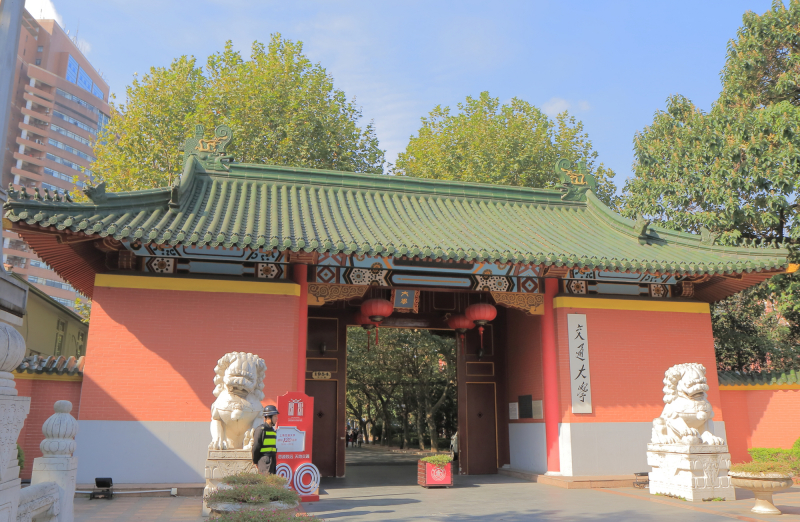
Shanghai Jiao Tong University. Credit: depositphotos.com
This experience still helps me in my work to this day. When dealing with international students, it’s important to understand their cultures to avoid any miscommunications. For instance, some of our Russian students still can’t get used to the 100-point grading system, unlike our Chinese students who are long familiar with this system. The fact that I speak Chinese also helps me a lot, especially with our first-years who have just come to Russia and don’t know the language yet.
Your thesis was about the representation of hysteria in art. How can your research be applied to real life?
I finished my PhD in the summer of 2021 and now I’m about to defend my thesis. The practical applications of my work are, in fact, enormous. For starters, it can be used to transform the current methodology and integrate teaching manuals, as well as serve as a basis for other scientific articles. What’s most important is that my research follows an interdisciplinary approach since art can’t be separated from philosophy, cultural and social studies, as well as other disciplines, too.
There are also medical humanities that draw connections between humanities and medicine. Later on, I plan to use this for my courses and interdisciplinary research. Such programs have long been around in the US or the UK. There, medical specialists and humanities researchers widely work side by side on their projects – take the joint project of artist Catherine Yass and a medical cluster that looks at insomnia and REM sleep through art media. Catherine Yass did a great job communicating the problem not only to experts but also to the general public. Adding an artistic approach makes it possible to explain complicated things in a simple way. Some people still don’t know how MRI works, even though it’s been around since the ‘70s. They feel uncomfortable in an MRI scanner – even if they don’t suffer from claustrophobia – simply because they have no idea of what’s happening with their body during this procedure.
Not so long ago, you talked about medical humanities at SPB DH Week. How is this field developing now around the world?
Medical humanities is a field that encompasses multiple areas and large-scale projects. While it is only starting to develop in Russia, it’s been actively growing in the US since the ‘70s. The States promote empathy among medical specialists by, for instance, encouraging them to take part in the analysis of artistic works. It’s important because due to professional deformation and burnout, medical specialists start to struggle to understand the feelings of others and such practices help them improve communication with their patients.
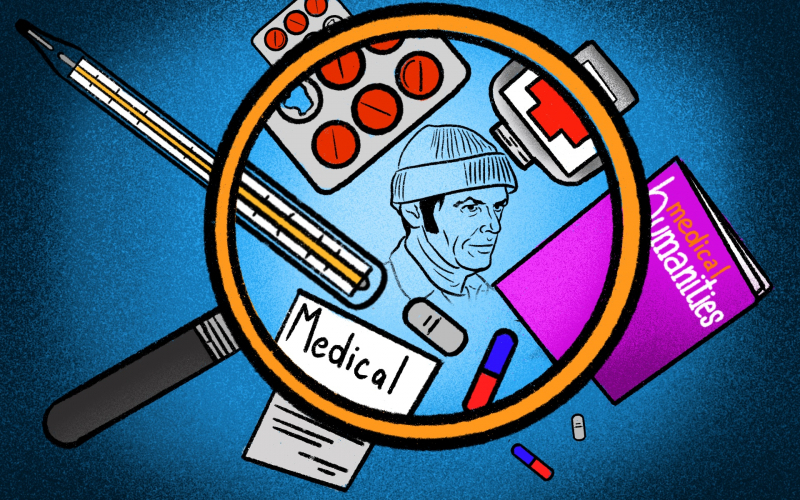
Medical humanities. Illustration by Dmitry Lisovsky / ITMO.NEWS
In Europe, one can find new centers studying the perception of this or that disease that developed over the years. As I see it, it’s important since quite weird things can sometimes happen. COVID-19 is a case in point. With its emergence came the need to understand how people perceive the virus and that was the job for experts in medical humanities. The disease fell to militarization. The media bombarded us with articles screaming “the enemy advances” or “an attack on the human body” – all this happened because people had no idea how viruses work and that there are both “good” and “bad” bacteria. This issue directly refers to the image of disease in art, culture, and literature. As a result, we now have a good deal of ongoing projects that explain how bacteria work and help people overcome their misconceptions, for instance, about the possible dangers of dairy products for microorganisms.
When and why did you decide to become a teacher?
Call it fate. I began to lecture and guide tours around the Fabergé Museum and the State Hermitage Museum when I was still in university. I’ve always enjoyed talking to people. Yes, I’m a researcher and I like to write articles but also organize conferences and courses. When I joined ITMO in 2018, it was a good start for me and it still gives me endless opportunities to expand my horizons and develop as a professional. So, I’m happy that I started to teach at ITMO and became part of the team.
I now teach both core and optional courses. Many tech students choose my disciplines to get a new perspective. One of my students continued to work on her project after taking the course. She used the advances of medical humanities to create a special interactive pillbox that reminds older people to take their medications, and her project was even named best at the Conference of Young Scientists. Because of this, I’m confident that today’s specialists, whatever their specializations are, must be well-rounded in other fields, too, and keep learning to improve their cultural fluency.
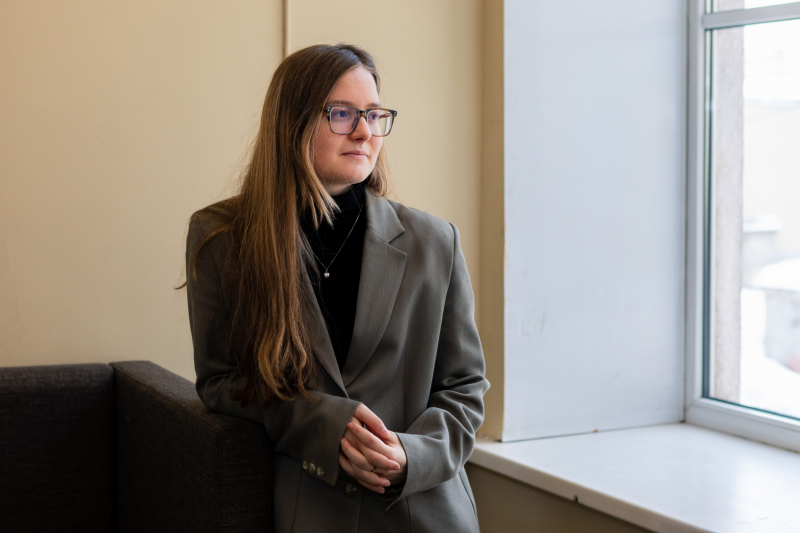
Daria Martynova. Photo by Dmitry Grigoryev / ITMO.NEWS
What do you think about the ITMO.EduStars contest?
I decided not to prepare for the contest and didn’t even tell my students about the experts who could attend our classes. When they did come, we had an interactive class where my students took the stage. This makes me believe that they played a much greater role in my victory than I did and that they were the ones who made that class a success.
I was pleasantly surprised to receive this award. Many people said nice words to me because they saw my photo featured on the contest’s stand. Moreover, winning motivated me because this means that I now have greater responsibilities and I know that my superiors and students believe in me. And it’s especially important because I’m just at the start of my teaching career. It makes me want to keep going and come up with new ideas.
Do you have any hobbies?
I used to be into synchronized swimming back in the day so I have a soft spot for water spots. In 2014, I got into sailing. The hardest thing about it is to feel your team. You first need to find the right rhythm together and then quickly muster your efforts to set a sail. This is a great way to unwind: when you’re out on the water, your mind is calm. Last summer, for example, I went sailing to Karelia.
